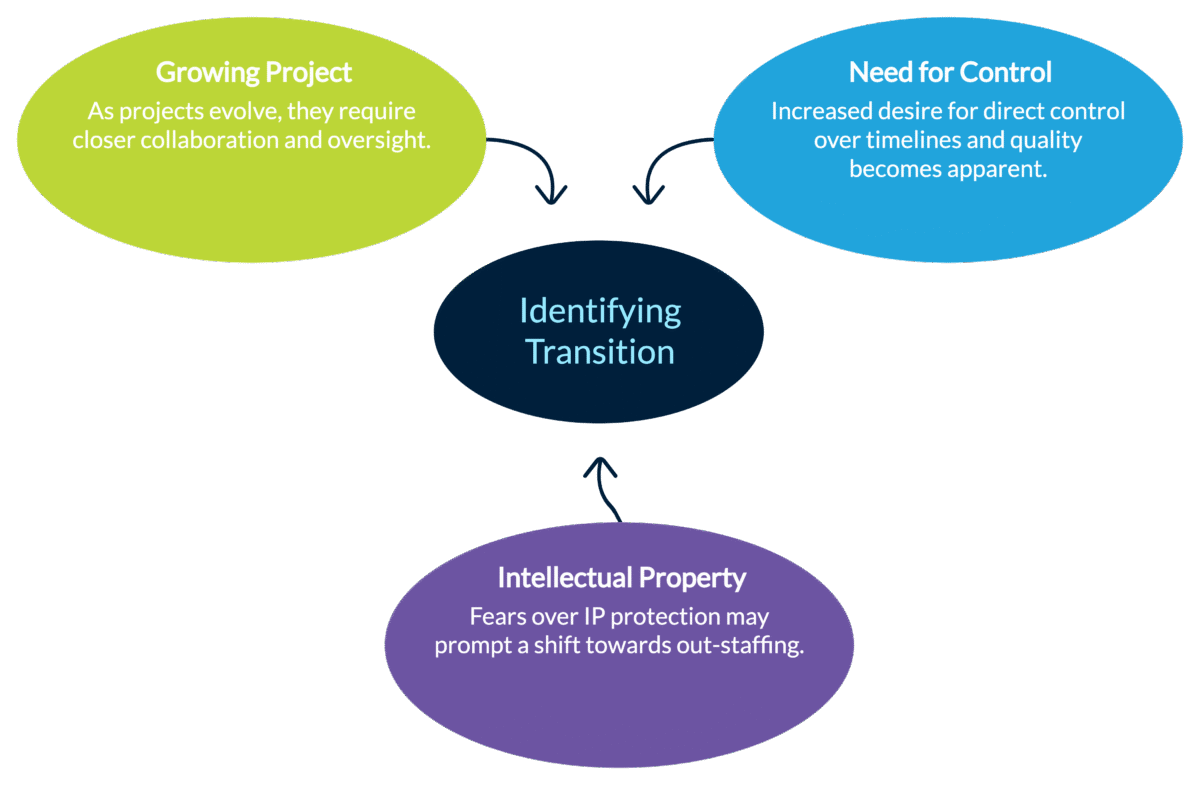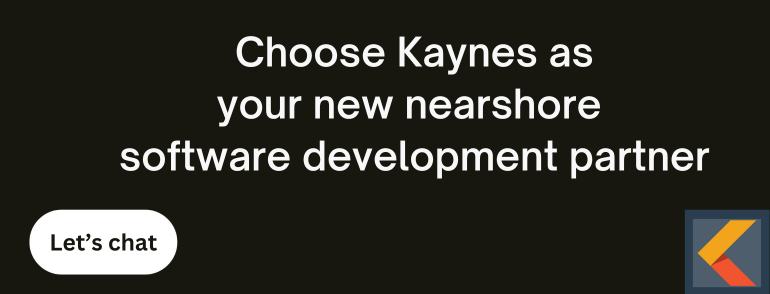
Best practices for transitioning from outsourcing to out-staffing for tech projects
Tech companies often face critical decisions when scaling operations. Among these decisions, transitioning from outsourcing to out-staffing emerges as a powerful strategy for flexibility and control. Understanding the nuances of each approach is essential for a smooth and effective shift.
Thank you for reading this post, don't forget to subscribe!Outsourcing typically involves delegating entire projects or specific functions to external agencies, while out-staffing means extending internal teams with external professionals. These individuals integrate seamlessly into existing workflows, essentially becoming part of the organization, though they remain employed by an external provider.
Identifying the Right Time to Transition

A shift from outsourcing to out-staffing is not a decision to take lightly. Businesses should carefully evaluate their needs before making a move. A primary indicator might be a growing demand for direct control over project timelines, quality, or intellectual property (IP).
Outsourcing works best for discrete, well-defined tasks. However, as projects become more complex, the need for consistent collaboration, faster decision-making, and closer oversight can signal that out-staffing is the better solution.
In contrast to outsourcing, out-staffing allows businesses to tap into expertise directly. Integrating remote talent into your internal teams helps maintain continuity, improves communication, and provides access to specialized skills without the complications of full-scale hiring.
Establishing Clear Expectations
For successful out-staffing, it’s vital to establish clear expectations with both the external professionals and internal teams. While out-staffed personnel will have day-to-day tasks defined, they also need to understand their role within the larger organizational framework.
An essential part of the transition involves setting up structured workflows. Clearly outline project deliverables, goals, and timelines. Provide proper onboarding to ensure they understand company culture, processes, and tools, so they can start contributing quickly and effectively.
The internal team’s role is equally important. They should act as mentors and facilitate the integration of out-staffed professionals. Strong communication between in-house and out-staffed members is essential for seamless collaboration and optimal outcomes.
Navigating Legal and Contractual Considerations

With out-staffing, the legal complexities shift from working with external vendors to managing contractors or remote workers. The transition requires an understanding of labor laws in both the home country and the locations of the out-staffed personnel. Different countries have unique regulations around employment contracts, taxation, and worker rights.
Working closely with legal experts can help ensure compliance with applicable laws and regulations. Additionally, companies should define terms regarding intellectual property rights, confidentiality, and non-compete clauses in their contracts with out-staffed professionals. These clauses are essential for safeguarding sensitive data and maintaining competitive advantage.
Managing Cultural and Communication Differences
Cultural fit plays a significant role in the success of an out-staffing transition. Working with external professionals, especially from different countries, can bring diverse perspectives and expertise. However, cultural differences can pose challenges in communication, work expectations, and decision-making.
To mitigate these risks, ensure clear communication guidelines are in place. Regular video calls, written documentation, and project management tools help reduce misunderstandings and maintain alignment. Emphasize transparency in communication and encourage out-staffed professionals to voice concerns or feedback.
Cultural training may also be beneficial for both in-house teams and out-staffed professionals. This fosters mutual respect and a smoother working relationship, enabling more productive collaboration.
Integration into Existing Teams
An essential aspect of the out-staffing model is how seamlessly external workers integrate with existing teams. Without strong integration, the transition can create a disconnect, hindering productivity. One way to overcome this is by assigning a designated team leader to coordinate between internal and out-staffed employees.
Regular check-ins and reviews help ensure alignment between all team members. Create a consistent process for sharing information, tracking progress, and evaluating performance. This is especially important if multiple external staff members are involved, as maintaining consistent practices is key to efficient collaboration.
Furthermore, fostering a sense of belonging is important. Out-staffed employees should not feel like outsiders, so encouraging participation in team meetings, brainstorming sessions, and even social activities can help build stronger relationships.
Addressing Project Management Challenges

Transitioning from outsourcing to out-staffing shifts the project management dynamics. In outsourcing, the external vendor typically manages the project. With out-staffing, the responsibility for project oversight often falls on the internal team.
This shift requires effective management tools, clear workflows, and strong oversight. Utilize project management software to coordinate tasks, monitor progress, and manage deadlines. Establish regular meetings and reviews to keep everyone on track and address any concerns early.
The internal team will need to ensure that out-staffed professionals have the resources they need to succeed. This means providing access to necessary software, databases, and support, as well as offering feedback to help them improve their work.
Maintaining Control and Flexibility
One of the biggest advantages of out-staffing over outsourcing is the increased control over the work process. When you outsource, you rely on the external provider’s management structure, which can limit your ability to influence the day-to-day work. Out-staffing allows you to take back control by integrating professionals into your workflows.
However, increased control means increased responsibility. The challenge lies in maintaining flexibility while ensuring that the out-staffed personnel align with internal practices. Successful management requires balancing autonomy with oversight. External employees should be empowered to take initiative while being guided by internal leadership.
Additionally, the flexibility of the out-staffing model allows for scaling up or down based on business needs. If a project requires more resources, it’s easy to bring in additional out-staffed professionals. Conversely, if the workload decreases, the number of out-staffed employees can be reduced, helping businesses maintain a lean structure.
Building Long-Term Relationships with Out-Staffed Professionals
Out-staffing fosters long-term relationships between your company and external professionals. Building these relationships can create a stable workforce that understands your company’s objectives, culture, and goals over time.
Invest in these relationships by providing ongoing professional development opportunities. This could involve offering access to training resources, attending conferences, or providing mentorship. Out-staffed professionals who feel valued and supported are more likely to stay committed to the organization and contribute to its long-term success.
Additionally, consider involving them in strategic planning or decision-making. When out-staffed professionals see their role as integral to the company’s future, they become more invested in the company’s growth.
Monitoring and Adjusting the Strategy

No transition is flawless, and businesses should be prepared to continuously evaluate and refine their out-staffing strategy. Regular assessments help identify any areas where processes can be improved or where additional support may be necessary.
Maintain a feedback loop with both internal and out-staffed employees. Use this information to adjust workflows, improve communication, and enhance overall project outcomes. Out-staffing is a dynamic model that benefits from constant refinement to align with changing business needs.


